A major player in the Indian ed-tech ecosystem, Cuemath had relied on traditional ways for data consolidation and product communication. But changing market conditions and increasing user touchpoints made it necessary to adapt to a fresh, more comprehensive approach.
When their product team approached WebEngage to identify potential opportunities, WebEngage’s Onboarding team recommended and developed a unique user-profile specific model for them. This model helped to build profitable relationships with users, drive results, and ensuring rapid adaptability for the future.
The Full Story
About Cuemath
Founded in 2013, Cuemath is an interactive, after-school math excellence program that brings together the best of technology and personal teaching in India.

Before we proceed, let’s take a moment to applaud the current technological advancement in the Indian ed-tech space. The primary and secondary education category currently has the largest addressable audience, with a student base of around 260 million. As per a KPMG report, this category is expected to grow at a CAGR of 60% to reach 773 million dollars, making it the largest category in 2021.
With immense potential in the market, Cuemath has extensively invested in its Cuemath Learning System (CLS). CLS is a multi-format approach that comprises carefully-designed workbooks, tablet activities, and puzzle cards to provide children with an engaging and holistic learning experience.
The Student Enrollment Process at Cuemath
Cuemath has about 50k+ students enrolled in over 2mn math classes across the country. Here’s how their student enrollment process works:
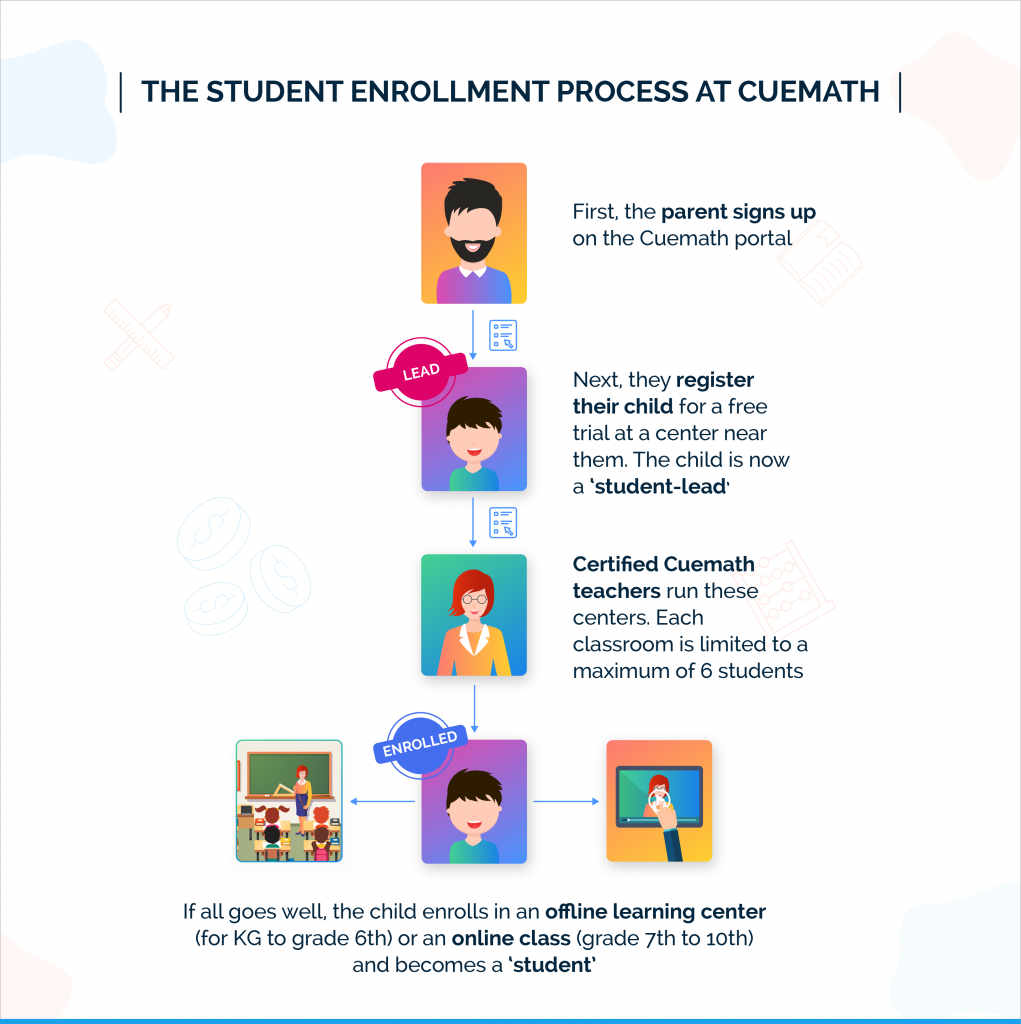
Once a child enrolls in an offline learning center (for KG to grade 6th) or an online class (grade 7th to 10th) he becomes a ‘student’. Parents can monitor their child’s progress and make payments on the website or the CueParent app.
Hence for Cuemath, while the parents always initiate the transaction, it’s the students who become the end consumers of the product.
Challenges for Cuemath
Though the final delivery was a mix of offline and online learning, Cuemath needed technology for every aspect of their platform. Whether it was the way students interacted with the platform, how parents monitored their kids’ progress on the app, or how the teachers ran the centers.
Challenge #1: Data Consolidation and Communication
Cuemath’s vast ecosystem interacted across channels (online courses and offline learning centers), devices and apps:
- While the online students used the website, the students at offline learning centers solved interactive puzzles/quizzes on their teacher’s tablet device.
- The tablet came with a pre-installed CueStudent app, wherein the teacher created profiles for each student. It helped track each student’s progress independently and create personalized learning plans for them.
- Each teacher installed a CueTeacher app that helped them run the centers effectively.
- Parents could use the website or install the CueParent app to access their kid’s profiles and make payments quickly.
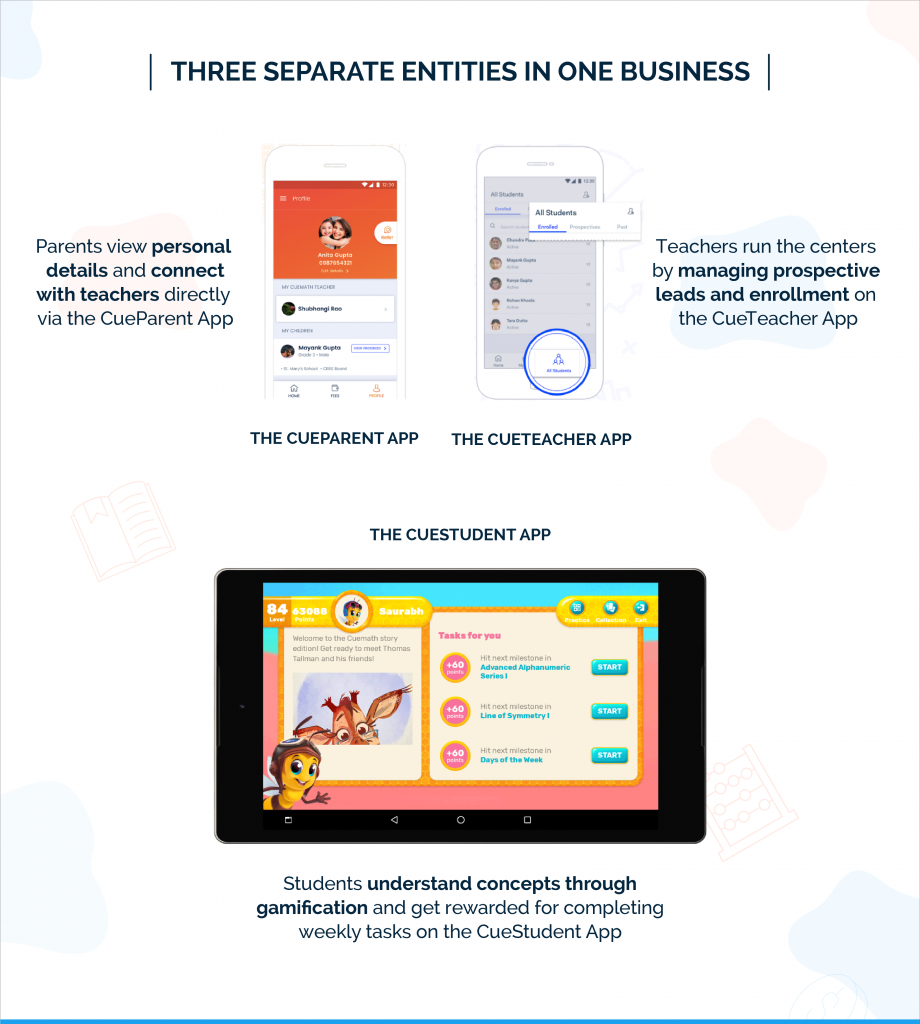
To put things in perspective, these are three separate entities (students + parents + teachers), interacting across six different platforms in a single business.
When different technologies were used to pull data from these sources, the results were rarely unified, making it extremely difficult to use. Cuemath needed a system that could pull all the data at one place and present a holistic view of each user.
💡For example, if a parent’s profile had their kid’s name, along with other important attributes like acquisition source, locality, etc. at one place, Cuemath could easily group parents staying in a particular area and send an email about a test-series at a nearby learning center to them.
💡Similarly, they could automate other product communication like student milestones, progress reports, course updates, etc.
When most CRM and marketing automation platforms could not tackle these multi-sided scenarios, Cuemath decided to join hands with WebEngage.
WebEngage assigned a dedicated team to help Cuemath tackle these challenges. The team ensured the entire process was smooth and Cuemath’s requirements were met.
Solution: Consolidation of Data
WebEngage’s website and app SDK enabled Cuemath to capture all user events. These were later used to personalize user experiences across all platforms.
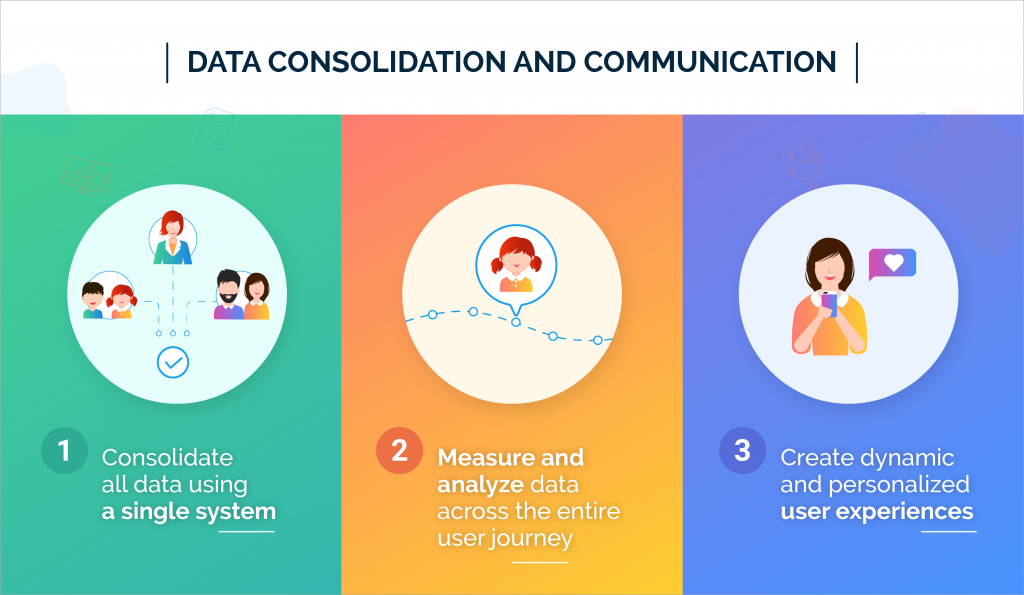
As the next step, the Onboarding team at WebEngage suggested Cuemath create separate accounts for each entity; teacher, parent, and student on the WebEngage dashboard.
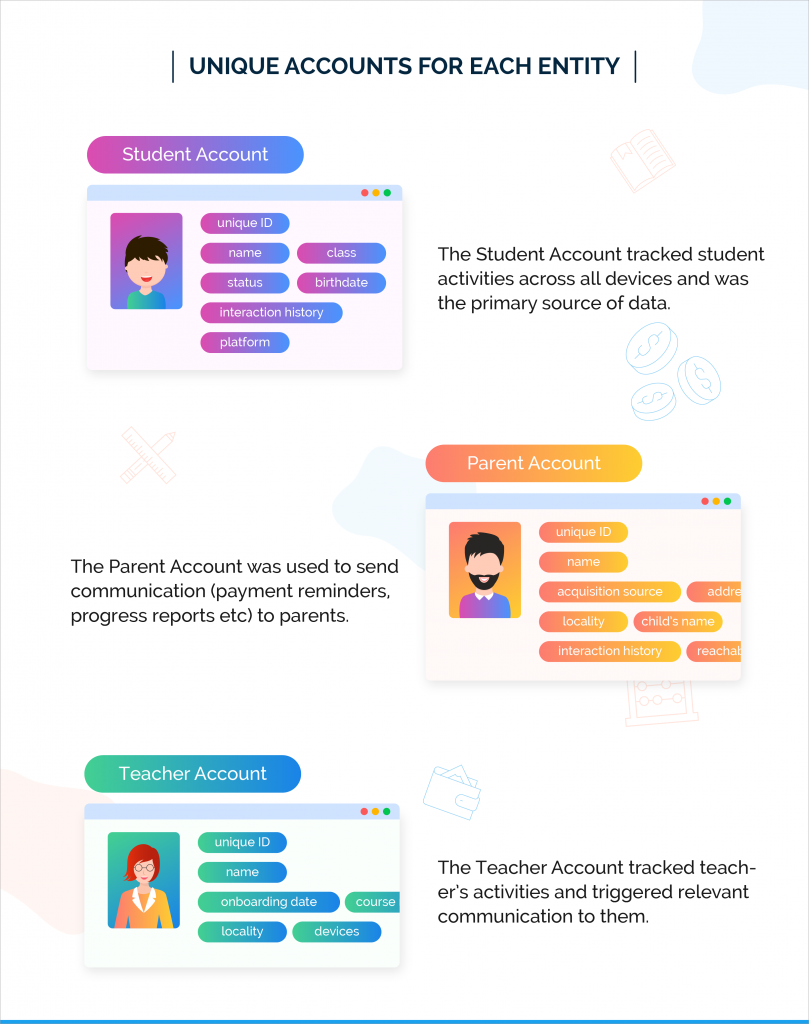
Each account served a unique purpose. The above image has been explained in detail below:
- The student account tracked the activities of the student across all platforms (website, CueStudent app).
- As students were the end consumers, this account became the primary source of data. All the personalization elements were present in this account, e.g., name, grade, photo, etc.
- Each student had a unique ID that would span across their entire lifecycle. Lifecycle stages like ‘student-lead’ or ‘student’ were attributes, under the same ID.
- Similarly, a parent ID had attributes that defined their acquisition source, address, locality, etc. A child’s name could also be one of the attributes.
- The parent account sent communications to parents.
- The teacher account contained unique information about teachers, like onboarding date, course names, etc. It was used to communicate with the teachers alone.
Not only did this model serve as a starting point to automate the multi-sided communication, but also formed a blueprint for the team-structure as the team expanded.
Challenge #2: The Customer – Consumer Complexity
It is common for brands to track consumer interaction and direct each marketing/product activity towards inducing the user to take a specific action. This action could be a purchase, sign-up, fee-payment, form download, course completion, etc.
Now here’s where it started to get tricky. If Cuemath simply concentrated on their consumers, they would have ended up sending fee payment reminders and performance reports to 6-year-olds!
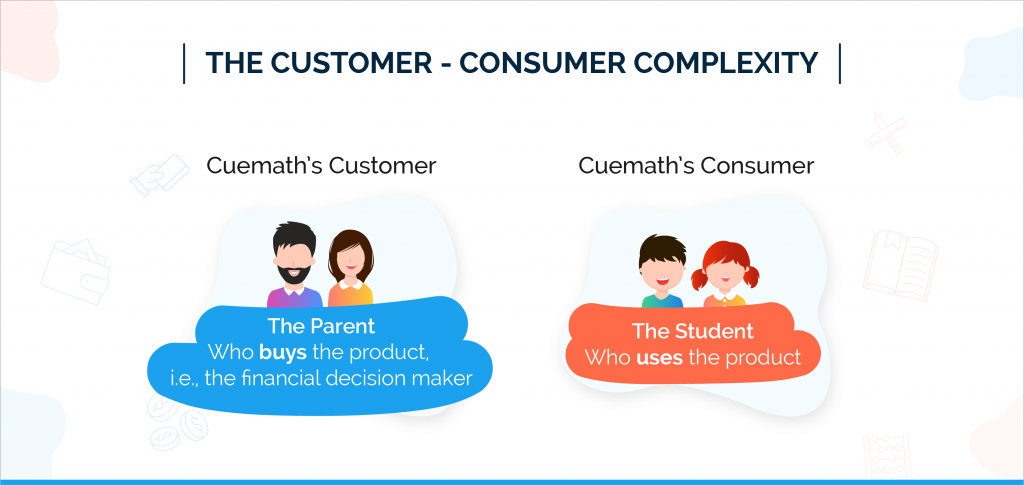
For the majority of cases, Cuemath had to track a student’s activity but influence the buying decision of the parent.
Most CRM and marketing tools were not built to automate this kind of multi-sided communication. The only option was:
- Manually segment user-profiles and;
- Send out ad-hoc notifications to them.
💡For example, to send a fee-payment reminder to parents, Cuemath would first filter a list of ‘parent profiles’ whose fee-payment was due today. Next, they would manually send an email to them. Similarly, for the following day, they would procure a new list, and trigger another email. Often,
- The list would not be accurate
- The email lacked personalization elements (student’s name, course, dates, amount, etc.)
- The entire process would take time and effort, slowing down execution cycles
Solution: Event-linking for Multi-sided Communication
The next step was to ensure necessary data from one account flowed to another.
💡For example, if a student’s payment was due, then the pertinent information should have been immediately relayed to the parent’s account.
For this, WebEngage deployed a robust structure to manage the inter-communication between each account. This was made possible by using intelligent user journeys and event-linking.
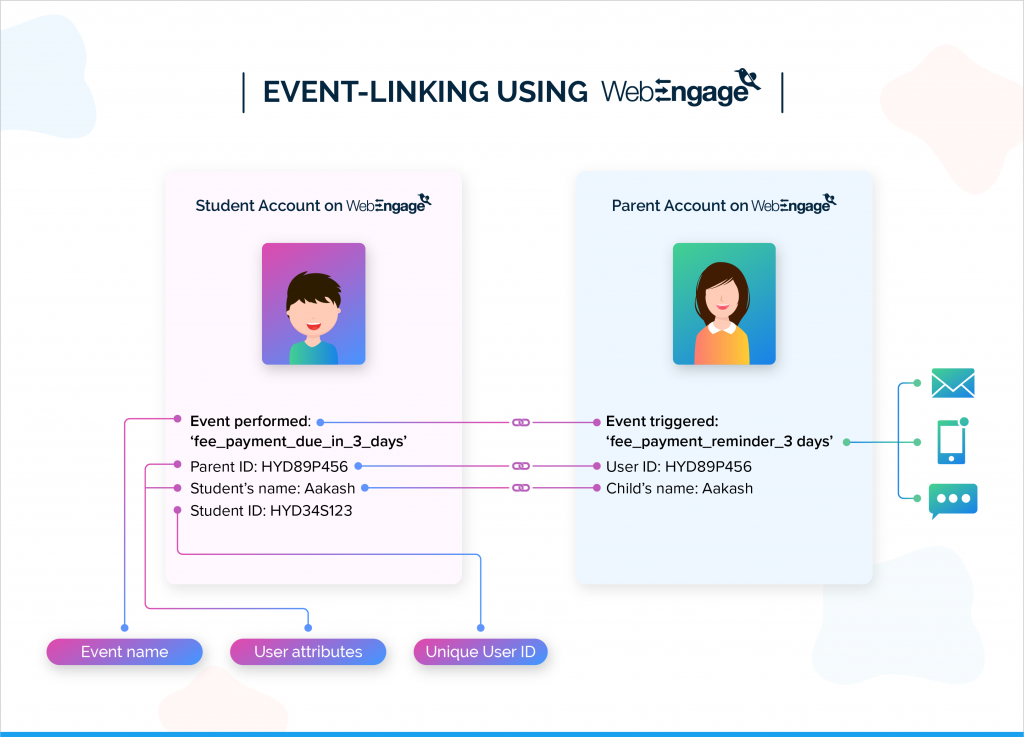
As soon as a student’s fee payment was due, the student account triggered an API call that sends the necessary event details to the parent’s profile. The parent account would then shoot a reminder email to the parent.
On the product front, this resolved data quality issues that could have compromised the customer experience. On the business front, it ensured extensibility and portability for future expansions and integrations.

Know more about event-linking →
Challenge #3: A Teacher’s Lifecycle
On top of this, was a layer of a teacher’s lifecycle. Teachers at offline learning centers could enroll students organically to their classes. Think of this as a hyper-local learning model, where students get to connect with teachers who come from the same geographical location.
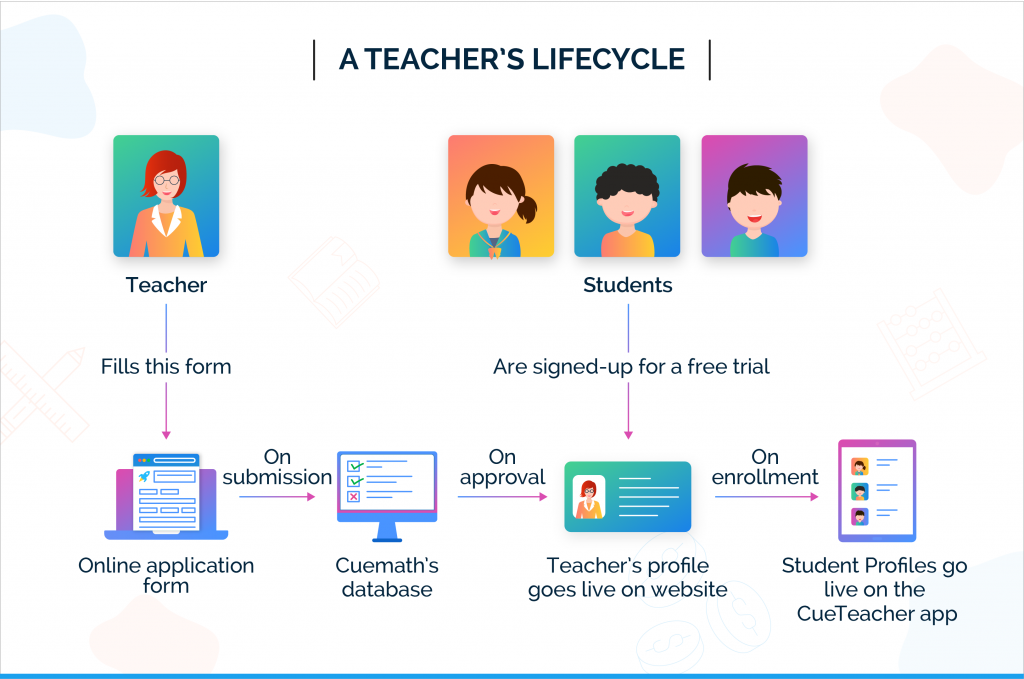
When the offline centers became a vital source of revenue, Cuemath decided to invest resources in empowering and retaining teachers on the platform for the long-term.
Solution: Sophisticated Conversion Strategies
Once Webengage established the inter-communication between each entity, Cuemath designed conversion strategies across different devices, channels, and touch-points:
1. Teacher enrollment
💡After initiating profile creation, the teacher was prompted to add other information like personal details, work experience, educational qualifications, etc. Till the time of profile completion, Cuemath sent recurring emails to engage them.
2. Onboarding messages
💡On the final form submission, Cuemath reviewed the profiles and trained the teachers before making their profiles live on the website. A series of how-tos and guides ushered the Teachers onboard.
3. Teacher-student engagement
💡Cuemath sent messages like “Your teacher has just released a new video” to increase content consumption and stimulate teacher-student engagement.
The Impact
With WebEngage’s powerful cross-channel automation, Cuemath executed and improved their product and marketing strategies.

The multi-sided communication model became essential to Cuemath’s growth:
- The email CTRs increased by 30%, and fee-payments went up by 15%.
- Student engagement saw a boost of 23%.
- The teacher enrollment programs generated 30% more submissions from teachers, with each teacher bringing in 4-6 students to their classroom.
- Cuemath also touched upon softer aspects like parents’ conviction in the platform.
- When monthly reports showed the child’s progress in the subject, parents recognized Cuemath’s impact on their child’s life.
- The result was increased engagement, word of mouth, and revenue.
This model also served as a blueprint for future team alignment. As the business expanded, Cuemath assigned each entity to a different team. Defined accounts made it easier for each team to concentrate on their vertical and work towards common goals.
Want To Drive Such Impact To Your Brand? – Talk To Us
Also read: Unmarketing Cloud For Ed-Tech Businesses
Final Thoughts
WebEngage’s long-term vision and experience with a plethora of ed-tech clients made them stand apart from all other marketing workflow tools. Their foresight proved to be a game-changer for Cuemath.
With multi-sided communication becoming a necessity for ed-tech and other industries, WebEngage is working on creating a better version of their product to elevate the customer experience further. Get in touch with the team to know more about this update and how it can impact your business!




































